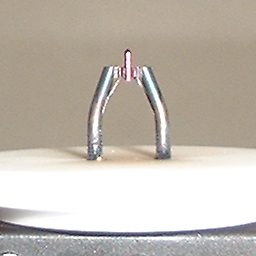
Simple Electron Microscopy Primer
The electron microscope generates images by bombarding a sample with electrons and then transforming the results of that interaction into a viewable image. For the image to form, the electrons that are generated need to be tightly controlled.

Because the emitted electrons in the various types of guns are heated, their energy distribution is not a sharp peak. Instead, they have a Boltzmann distribution that can vary widely depending on the type of filament. For a good microscope, you want ∆E/E to be as small as possible, that is, the energy distribution to be a small fraction of the average energy of the electrons. Following is a list of the average energy distributions:
| Filament | Energy Distribution (∆E) |
|---|---|
| Heated tungsten | 2.5 eV |
| LaB6 | 1.5 eV |
| Warm FEG | 1.0 eV |
| Cold FEG | 0.25 eV |
It is clear that the FEG based microscopes have an advantage over the other types. For this reason, they are most often used for high resolution imaging. Ideally, cold FEGs are the best. However, they suffer from rapid degradation and are not economical.
Spatial coherence basically means beam brightness. If the electrons are all emmitted as close to parallel as possible, then the beam will remain together over a long distance. This effect translates to greater brightness. The phase of the electrons also affects coherence. Ideally, the emitted electrons should all be in phase. If they are in phase, the electron waves interact constructively. If the phases are not aligned, then destructive interference will occur, and the beam will be less bright.